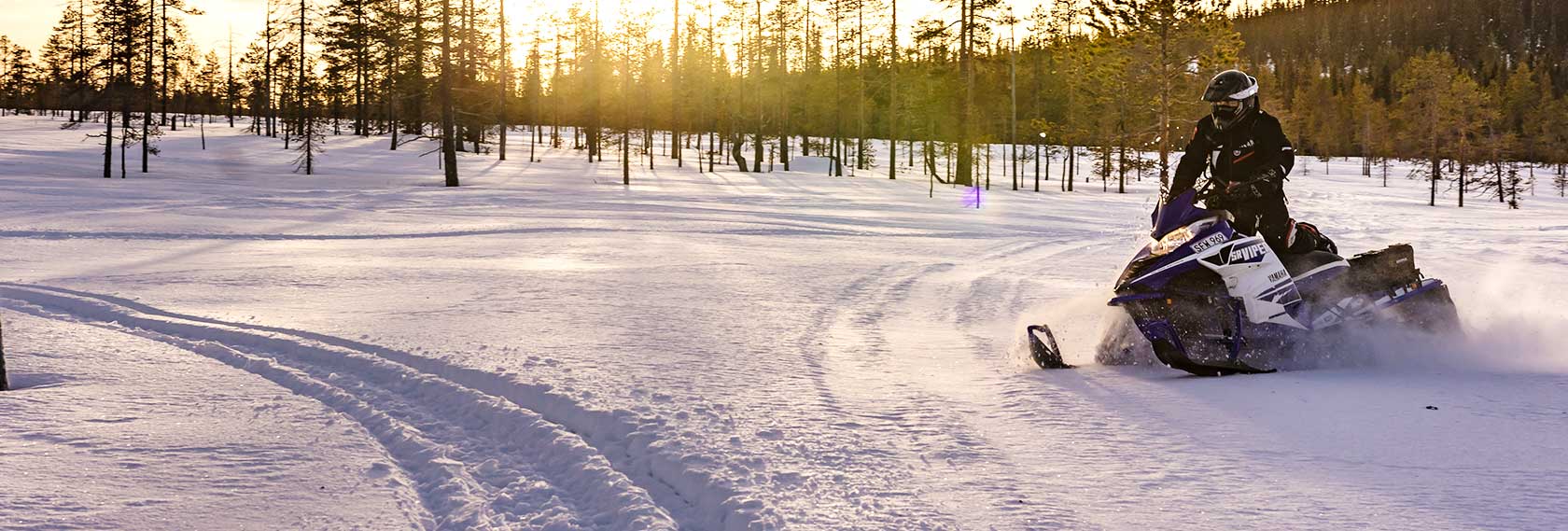

Professionalism is displayed when a club uses printed, weatherproof signs on their trails, something that is easily accomplished. Laser printer output by itself is waterproof but the paper is not. Laminating a paper sign or printing to a self-adhesive weatherproof polyester stock yields a very durable sign. Polyester stock comes in many shapes and sizes and is easy to get on the web, from tiny stickers to letter sized sheets.
SAM offers clubs a great line of directional arrows, stop signs, caution signs, etc. These signs are reflective and should always be used where safety is crucial. Laser signs are not reflective and are best used for informational purposes such as route numbers, intersection numbers, and information such as maps, food, and fuel. Reflective tape may be added to laser signs to make them stand out at night.
There are some do’s and don’ts I have learned after four years of making signs. My first attempts used cold laminated printing paper. These are quite durable but are easily damaged by an errant nail or staple. If the sign is pierced through the paper, moisture will get in and ruin it real fast. I use a “Cellular PVC” backboard. There were problems with expansion and contraction separating the laminated sign from these boards. Laminating was time consuming and expensive, too. Polyester is much less expensive and easier to use.
Printing on polyester can be done on a color or black and white laser printer. A number of factors can make or break the sign. Some colors are better than others and the quality of the toner is very important. A bunch of signs with cheap toner faded rapidly. Red is particularly subject to fading but a test sign with high quality red stood up to a whole summer of sun exposure. I have also had problems with blue. Cheap toners also erode. The sign fades away from loss of toner. Signs facing north or in the shade hold up best. The best color is black. Yellow holds up well too. As faded signs are replaced, more black will be used.
Right off the printer, polyester is easily scratched but the toner cures over time. Careful handling helps. When transporting signs on a sled, wrap them in newspaper and rubber-band them. The polyester is also available in clear. Overlaying printed polyester makes a very durable surface but results are mixed. A south-facing map bubbled quickly while a shaded one is still fine. I’m not sure if it failed from solar exposure or contamination on the board. Now I wipe the boards with rubbing alcohol first. I plan on experimenting more with the clear overlays. I have also coated signs with clear spray paint. There are some coated signs out there for 3 years and last time I looked they were as good as new.
When installing signs, drill holes through the backboards and use aluminum nails. Nailing without holes will break the plastic. If you are nailing to trees, be sure it’s ok with the landowner. Don’t drive the nails all the way in, the tree will grow and break the sign! The nails are more easily removed too. Angle the nails slightly so the sign doesn’t flap in the wind.
Printable self-adhesive polyester is available at www.onlinelabels.com and other websites. They offer weatherproof inkjet labels too. I’ve sampled the material and it does indeed seem to be weatherproof. I buy cellular PVC plastic sheet from Modern Plastics in Springfield, it’s sold under the name Samona. Black is usually priced lower than white or the other colors. Black and white are the easiest to get. The 3mm (1/8″) thickness is the most practical. It comes in 4×8 sheets. Plastic dealers often have drops of this or similar material at a discounted price.
Great grooming and clear printed signs make riding unfamiliar trails a great experience. Even a good map is useless without them! Have fun on the trails!